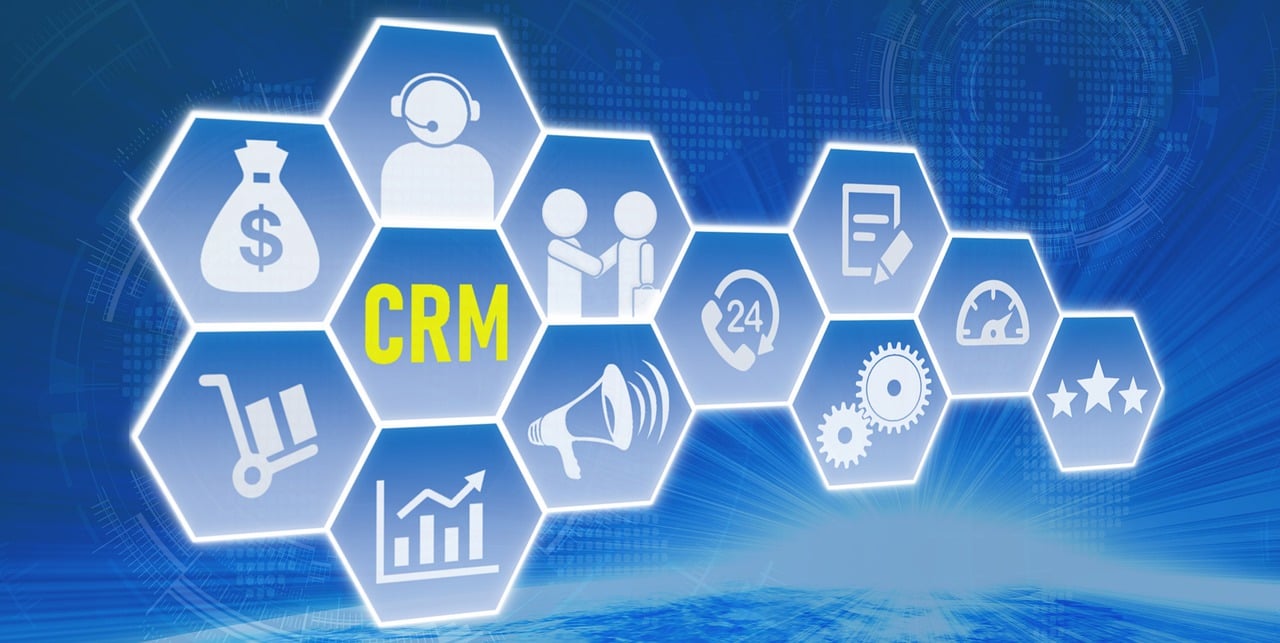“Customer Relationship Management (CRM) is, without a doubt, the most important tool for every salesperson. As discussed in the last blog, if a salesperson disagrees with this notion, it often indicates a misunderstanding of the platform’s potential. In this blog, I’ll outline why CRM is so powerful and clarify what CRM should not be. Sales efficiency = CRM.
This blog is not intended to compare all the available CRM systems or recommend any particular platform. You can easily perform a quick search for ‘sales efficiency,’ and you’ll find many CRM providers highlighting their strengths. Instead, the focus here is on how to maximize the efficiency of a salesperson through CRM, ensuring it becomes their daily go-to tool.
A CRM system can greatly enhance a salesperson’s performance when they understand its added value and can work with it in a logical, intuitive way.
So why, despite extensive marketing efforts and widespread implementation, do many salespeople remain reluctant to fully adopt CRM systems? Why are companies hiring additional staff to support sales teams with CRM activities? And why are there so many external agencies dedicated to optimizing CRM systems for greater efficiency?
CRM is NOT
Instead of starting with how a CRM should function to be efficient for a salesperson, it’s more effective to clarify what a CRM should not be:
≠ ERP: A CRM should not be confused with an Enterprise Resource Planning (ERP) system. Too often, ERPs are extended to cover CRM functions. The result is typically more focused on order processing and forecasting rather than supporting the entire customer journey. As mentioned, the CRM should not function as an ERP system. Instead, a well-balanced CRM should provide a weighted forecast as input for the ERP. The order status and deliveries from the ERP should be output into the CRM.
CRM and ERP systems both have their strengths, and when integrated effectively, they form a powerful combination.
≠ Database: The days when a CRM was merely a database of addresses and names are long gone. While basic customer information is crucial, the true power of CRM platforms extends far beyond that. CRMs are now essential tools for managing customer relationships, tracking interactions, and providing actionable insights.
≠ Spreadsheet: Some may argue that a spreadsheet is the best CRM platform ever created. Structurally, it may seem logical, but spreadsheets require manual linking, monitoring, and management of data. CRM systems, on the other hand, are designed to manage relationships across multiple datapoints. Implementing much more advanced logic than a spreadsheet can ever provide. More importantly, a CRM does far more than what a user might initially envision.
≠ Bookkeeping: While a CRM can be used to send invoices, this should be its upper limit. Order processing and invoicing should be managed by the ERP, and payments should be handled by bookkeeping software. These systems complement one another, not overlap in functionality.
≠ Management Tool: The primary purpose of a CRM should not be to solely serve the leadership. If a CRM is used optimally by the sales team, it will naturally become a powerful tool for management. In other words, CRM implementation should never be driven purely by management’s desire to track performance.
≠ Project Management: While a well-designed CRM can manage multiple deliveries and key milestones such as Proof-of-Concepts, it is not a substitute for a full project management system. It cannot handle resource allocation, development sprints, or build complex project trees.
Most importantly, any information generated by the CRM should not require duplication by sales personnel in any form. Doing so likely leads to significant sales inefficiencies.
CRM should consider
In order to provide the sales team with the most efficient tool, it’s essential to first understand how the team manages their (potential) accounts. This is precisely what CRM consultancies aim to achieve. They begin a CRM implementation or migration process with such an evaluation, although they often approach this with a specific CRM system in mind. However, it’s more important to take a blank slate approach. Collaborating with the team to determine what works best, recognizing that no one solution can cater to every need.
Less is more.
When analyzing CRM requirements, it’s easy for the scope to expand as every desired feature is added. Therefore, it’s crucial to distinguish between the essential requirements and the ‘nice-to-haves’. In the past, entire CRMs have been implemented, only for certain fields to be later disabled as they didn’t contribute to overall efficiency. While this may seem logical, it’s worth considering how much unnecessary effort the sales team expended on features that were eventually deemed unnecessary.
For salespeople who are constantly on the move, a CRM system that works both online and offline would be ideal. The time spent re-entering data late in the evening after a full day on the road, leads to inefficiencies. Tip: Consider creating a Word template that can be imported into the CRM once back online. Streamlining data entry and improving overall productivity
CRM to sales people
This platform should serve as your go-to resource for continuously monitoring the status of your customer network. It’s essential to build a dashboard that provides up-to-date information on outstanding activities while reflecting the key performance targets. Keep the dashboard concise, focusing on the most critical KPIs, and create additional layers of more detailed dashboards as necessary.
Ensure your data is accurate—avoid inflating or underestimating figures, as this benefits neither you nor those relying on the information. It’s also important to remain open to understanding how others use this data in their daily activities.
If certain fields in the CRM are ineffective or missing, engage in an open dialogue with those responsible for managing it. Clearly express your needs in a constructive manner and suggest alternatives where possible.
Embrace the CRM system and strive to make it as effective and valuable as possible for all stakeholders.

